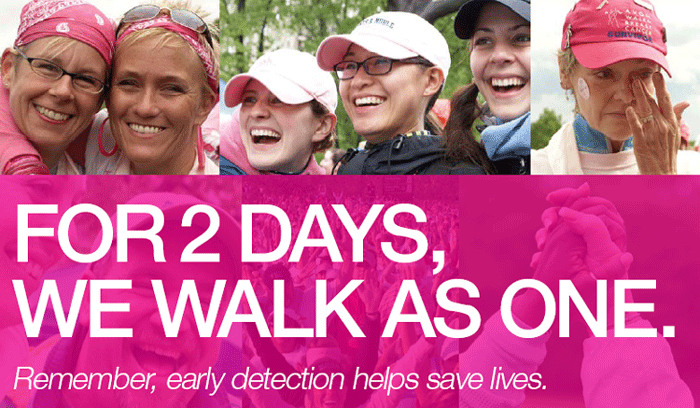The following article was submitted by a student in “Women and Society,” a freshman class in women’s studies taught by department chair Christina Bobel. Students in Bobel’s class were required to submit their papers for publication in a local newspaper.
In July 2011, Meghan Casserly, a writer at Forbes, posted an article about pinkwashing. Casserly defines pinkwashing as “the practice of using the color pink and pink ribbons to indicate a company has joined the search for a breast cancer cure and to invoke breast cancer solidarity, even when the company may be using chemicals linked to cancer.”
Pinkwashing serves to promote products. Corporations tell consumers that buying a product is the same thing as raising awareness or helping the search for a cure for cancer. Casserly mentions the makeup manufacturer Avon, which opened a line of six lipsticks promoting breast cancer awareness.
The problem here is not solely that Avon is profiting from raising awareness, but that Avon’s products contain ingredients that disrupt women’s hormone function in ways that can actually lead to breast cancer. In fact, many makeup companies use these hormones in their products.
Statistics show that nine out of ten cases of breast cancer are not caused by genetic predisposition. Toxic chemicals that are put into our bodies are the true cause of cancer. Awareness needs to be raised in a way that is not harmful to consumers and does not benefit corporations more than the cause.
Casserly asks how much money really goes to support breast cancer programs. When it comes down to it, do we ever ask how much of our purchase is going to help people with breast cancer? I never have. I have assumed that “this is a good cause,” “they’re doing a good thing by promoting awareness,” and “I’m helping the cure.” In reality, we should be donating money in some other way.
Casserly also discusses the example of the shoemaker Reebok. In 2010, Reebok marketed a line of pink-ribbon-emblazoned footwear and apparel at prices ranging from $50-$100. Though it heavily promoted the fact that some of the pink ribbon product sales would be donated to the Avon Breast Cancer Walk, the company set a limit on donations of $750,000. Only $750,000 would be donated regardless of how many items were sold, and there was no mechanism in place to alert consumers once the maximum donation had been met.
Here are some questions consumers should ask about breast cancer awareness campaigns:
1. Does any money from this purchase go to support breast cancer programs? How much?
2. Which organization will get the money? What will it do with the funds?
3. Is there a cap on the amount the company will donate? Has the maximum donation already been met?
4. Does this purchase put you or someone you love at risk for exposure to toxins linked to breast cancer?
I believe that donation should be limitless and consumers should have the right to know how much money is going to breast cancer research, if any. Pinkwashing has become a trend, and will continue.
We need to open our eyes and ask ourselves if this is the right way to help the cause. Asking questions could save a life!
Email Maria Rapsomanikis.

